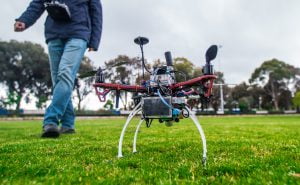Demystifying video production jargon: a beginner’s guide.
In today’s digital age, video content has become a powerful tool for communication, marketing, and entertainment. From social media platforms to corporate presentations, videos are ubiquitous. However, for someone new to the world of video production, the terminology and jargon can be overwhelming. In this comprehensive guide, we will demystify video production jargon, making it accessible and understandable for beginners. Whether you’re an aspiring filmmaker or a business owner looking to create compelling video content, this guide will equip you with the knowledge you need.
Understanding the Basics
1. Video Production Process
Before diving into the jargon, let’s outline the fundamental steps of video production:
Pre-Production: This phase involves planning, scripting, storyboarding, and assembling the necessary resources. It’s the foundation of any successful video project.
Production: This is where the actual shooting takes place. It includes capturing video footage, recording audio, and ensuring that everything goes according to the script.
Post-Production: After the filming is complete, post-production involves editing, adding special effects, sound mixing, and other enhancements to create a polished final product.
2. Aspect Ratio
Aspect ratio refers to the proportional relationship between a video’s width and height. The two most common aspect ratios are 16:9 (widescreen) and 4:3 (standard). Widescreen is the standard for most modern videos, providing a cinematic look.
Decoding Video Production Jargon
Now, let’s delve into the world of video production jargon and decode some essential terms:
3. B-Roll
B-roll is supplementary footage that is often used to cut away from the main shot. It provides context or visual interest to the main content. For example, in a documentary about wildlife, B-roll might include scenic shots of landscapes and animals in their natural habitat.
4. Dolly Shot
A dolly shot involves moving the camera smoothly on a wheeled platform (dolly) to create a dynamic and fluid motion. It’s commonly used in filmmaking to follow actors or objects.
5. Montage
A montage is a sequence of short shots edited together to condense time, convey information, or evoke emotions. It’s a powerful storytelling technique often used to show the passage of time or a character’s development.
6. Jump Cut
A jump cut occurs when two consecutive shots of the same subject are taken from slightly different angles or positions, creating a jarring visual effect. This technique is sometimes used intentionally for stylistic purposes.
7. White Balance
White balance is the adjustment of colors in a video to ensure that white appears as true white, regardless of the lighting conditions. Proper white balance is crucial for accurate and natural-looking colors in your footage.
8. Frame Rate
Frame rate refers to the number of individual frames or images displayed per second in a video. The standard frame rate for most videos is 24 frames per second (fps), which gives a cinematic feel. Higher frame rates, such as 60 fps, are used for smoother motion, while lower frame rates, like 30 fps, are common for television.
9. Foley
Foley is the art of creating and recording additional sound effects in post-production to enhance the audio quality and realism of a video. These sounds can range from footsteps to door creaks, adding depth to the audio experience.
10. Color Grading
Color grading is the process of adjusting and enhancing the colors in a video to achieve a specific look or mood. It can dramatically impact the visual aesthetics of a video, turning a mundane scene into a cinematic masterpiece.
Advanced Video Production Techniques
11. Cinematography
Cinematography is the art of capturing visually stunning images on film or digital media. It involves decisions about camera angles, composition, lighting, and movement. Mastering cinematography can elevate the quality of your videos, making them more engaging and aesthetically pleasing.
12. Depth of Field
Understanding depth of field is crucial for achieving professional-looking shots. It refers to the range of distances in a scene that appears acceptably sharp. A shallow depth of field can be used to isolate a subject from the background, creating a cinematic and dramatic effect.
13. 4K and Beyond
Video resolution has come a long way, and now 4K (3840×2160 pixels) has become the standard for high-quality video. However, with technology advancing rapidly, it’s essential to stay updated on the latest resolutions, such as 8K and beyond, to future-proof your content.
14. Green Screen (Chroma Keying)
Green screen or chroma keying is a technique where a subject is filmed in front of a green background, which is later replaced with a different background during post-production. This technique is widely used in creating special effects and virtual environments.
15. Slow Motion
Slow motion adds a captivating and dramatic element to your videos by capturing more frames per second and then playing them back at regular speed. It can be used to highlight specific actions or moments, creating a visually stunning impact.
16. Storyboarding and Shot Lists
For more complex video projects, creating a storyboard and shot list is essential. A storyboard is a visual representation of your video’s scenes, while a shot list outlines the specific shots you need to capture. This meticulous planning ensures a smooth and efficient production process.
17. Sound Design
While great visuals are crucial, don’t underestimate the importance of sound design. High-quality audio, including clear dialogue, well-chosen music, and immersive sound effects, enhances the overall viewing experience.
18. Lighting Techniques
Mastering lighting techniques is vital for achieving the desired mood and atmosphere in your videos. Techniques like three-point lighting, soft lighting, and chiaroscuro lighting can transform ordinary scenes into cinematic masterpieces.
Video Production Tools
19. Editing Software
Investing in professional video editing software like Adobe Premiere Pro or Final Cut Pro can significantly enhance your post-production capabilities. These tools provide advanced features for editing, color correction, and special effects.
20. Camera Stabilisation
To capture smooth and steady shots, consider using camera stabilization equipment such as gimbals or steadicams. These devices reduce camera shake and result in professional-looking footage.
The final word.
Video production is a multifaceted art that combines technical expertise with creativity. As you continue to explore and apply these advanced techniques, you’ll be better equipped to produce videos that captivate your audience and stand out in the digital landscape.
Remember that practice and experimentation are key to mastering video production. Keep honing your skills, stay updated with the latest trends and technologies, and never stop pushing the boundaries of your creativity.
More articles.

The rise of mobile video production: tips for success.
In recent years, the world of video production has undergone a transformative shift with the rise of mobile video production. The accessibility and convenience of

Video production ethics: responsibility and impact.
In today’s digital world, video production has become easily accessible to all. It is an exciting time with endless possibilities for creativity and expression. But

Video production on a budget: maximising resources.
Video production on a budget can be quite the challenge. As content needs grow, budgets often shrink or stay the same. Marketers find themselves at